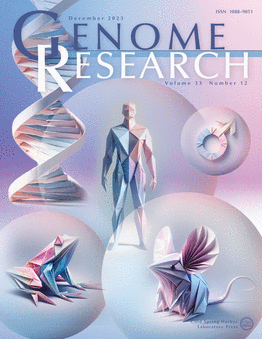Contiguous and complete assemblies of Blastocystis gut microbiome-associated protists reveal evolutionary diversification to host ecology
IF 5.5
2区 生物学
Q1 BIOCHEMISTRY & MOLECULAR BIOLOGY
引用次数: 0
Abstract
Blastocystis, an obligate host-associated protist, is the most common microbial eukaryote in the human gut and is widely distributed across vertebrate hosts. The evolutionary transition of Blastocystis from its free-living stramenopile ancestors to a radiation of host-associated organisms is poorly understood. To explore this, we cultured and sequenced eight strains representing the significant phylogenetic diversity of the genus using long-read, short-read, and Hi-C DNA sequencing, alongside gene annotation and RNA sequencing. Comparative genomic analyses revealed significant variation in gene content and genome structure across Blastocystis. Notably, three strains from herbivorous tortoises, phylogenetically distant from human subtypes, have markedly larger genomes with longer introns and intergenic regions, and retain canonical stop codons absent in the human-associated strains. Despite these genetic differences, all eight isolates exhibit gene losses linked to the reduced cellular complexity of Blastocystis, including losses of cilia and flagella genes, microtubule motor genes, and signal transduction genes. Isolates from herbivorous tortoises contained higher numbers of plant carbohydrate-metabolizing enzymes, suggesting that like gut bacteria, these protists ferment plant material in the host gut. We find evidence that some of these carbohydrate-metabolizing enzymes were horizontally acquired from bacteria, indicating that horizontal gene transfer is an ongoing process in Blastocystis that has contributed to host-related adaptation. Together, these results highlight substantial genetic and metabolic diversity within the Blastocystis genus, indicating different lineages of Blastocystis have varied ecological roles in the host gut.囊虫肠道微生物相关原生生物的连续和完整组装揭示了宿主生态的进化多样化
囊虫是一种专性宿主相关原生生物,是人类肠道中最常见的真核微生物,广泛分布于脊椎动物宿主中。囊虫从其自由生活的层叠菌祖先到宿主相关生物体的辐射进化转变尚不清楚。为了探索这一点,我们培养并测序了8个菌株,使用长读、短读和Hi-C DNA测序,以及基因注释和RNA测序,代表了该属的显著系统发育多样性。比较基因组分析显示,不同囊虫的基因含量和基因组结构存在显著差异。值得注意的是,在系统发育上与人类亚型距离较远的食草陆龟中,有三种菌株的基因组明显更大,内含子和基因间区域更长,并且保留了人类相关菌株中缺失的典型终止密码子。尽管存在这些遗传差异,所有8个分离株都表现出与囊虫细胞复杂性降低相关的基因缺失,包括纤毛和鞭毛基因、微管运动基因和信号转导基因的缺失。从食草陆龟中分离出的原生生物含有更多的植物碳水化合物代谢酶,这表明与肠道细菌一样,这些原生生物在宿主肠道中发酵植物物质。我们发现有证据表明,这些碳水化合物代谢酶中的一些是从细菌中水平获得的,这表明水平基因转移在囊胚中是一个持续的过程,有助于宿主相关的适应。总之,这些结果突出了囊虫属内大量的遗传和代谢多样性,表明囊虫的不同谱系在宿主肠道中具有不同的生态作用。
本文章由计算机程序翻译,如有差异,请以英文原文为准。
求助全文
约1分钟内获得全文
求助全文
来源期刊

Genome research
生物-生化与分子生物学
CiteScore
12.40
自引率
1.40%
发文量
140
审稿时长
6 months
期刊介绍:
Launched in 1995, Genome Research is an international, continuously published, peer-reviewed journal that focuses on research that provides novel insights into the genome biology of all organisms, including advances in genomic medicine.
Among the topics considered by the journal are genome structure and function, comparative genomics, molecular evolution, genome-scale quantitative and population genetics, proteomics, epigenomics, and systems biology. The journal also features exciting gene discoveries and reports of cutting-edge computational biology and high-throughput methodologies.
New data in these areas are published as research papers, or methods and resource reports that provide novel information on technologies or tools that will be of interest to a broad readership. Complete data sets are presented electronically on the journal''s web site where appropriate. The journal also provides Reviews, Perspectives, and Insight/Outlook articles, which present commentary on the latest advances published both here and elsewhere, placing such progress in its broader biological context.
 求助内容:
求助内容: 应助结果提醒方式:
应助结果提醒方式:


